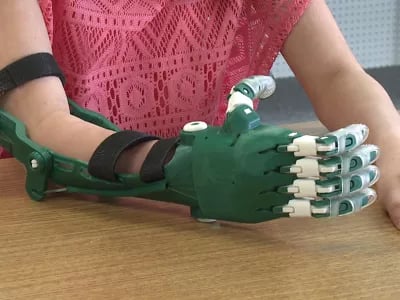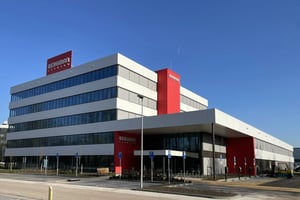If the present rate at which 3D printing is growing continues, half of all products will be made by 3D printers by 2060. The US consulting firm Wohlers calculated worldwide revenues in the 3D printing market in 2015 at EUR 4.9 billion (US$ 5.2 billion), up 25.9 percent from 2014, and projected revenues of EUR 6.7 billion for 2016, an increase of 37 percent. Wohlers expects the rapid growth of the past few years to continue in the future. What does the rise of 3D printing mean for global trade? And what is the position of the Netherlands?
Pressure on global trade
Trade economists at ING recently published a scenario study showing that if investment growth in 3D were to accelerate in the years ahead, half of all goods would already be produced by printing by 2040. The world map on 3dprintatlas.nl already shows that there are 3D hubs everywhere. That may lead to a reduction in global trade in the period up to 2060. In the Netherlands, this would certainly impact the ports, wholesale businesses and the transport & logistics sector and therefore the Dutch economy. Those sectors currently generate revenues of EUR 31 billion, but these might decrease by 40%.
The Netherlands as innovation leader
ING’s study shows that growth in investments in 3D printers has risen three times faster than that of investments in traditional capital goods in the past five years. According to earlier research by Berenschot and ABN Amro, the 3D printing market will grow by 20 percent in the Netherlands this year. The Netherlands is one of the world’s innovation leaders in this field: a relatively large number of 3D print companies are from the Netherlands. AMSYSTEMS, a centre established by the Netherlands Organisation for Applied Scientific Research TNO and Eindhoven University of Technology, is currently seeing the transition to industrial printing of food, pharmaceuticals, 3D electronics and spare parts taking place. The Netherlands is among the leaders for spare parts, according to the centre.
The 3D print atlas shows that in addition to plastics, bio-based materials, ceramics and organic material are also used in 3D printing. In fact, a bridge for bicycles was recently printed in 3D from concrete: it is located in Gemert (North Brabant). Eindhoven University of Technology is currently engaged in printing an entire house from concrete.













